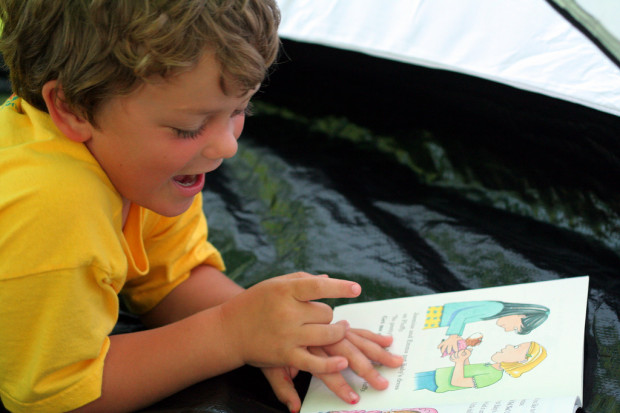As an educator with a specialization in special education, you’re passionate about going the extra mile to make that connection with your students. Kids with autism are both intelligent and creative, and it’s up to you as their teacher to find a way to navigate through the difficulty of communication to tap into those talents. Approach reading with an autistic child in mind, and you’re likely to form a lasting bond with your students.
Earn a Higher Degree
Special education takes an entirely different set of skills than the ones a basic education degree provides. If you’re going to connect with students through a shared passion for reading, further your education and earn a master’s in special education online. Discuss strategies with professors with years of experience in the field and design lesson plans with your classmates. Swap stories about the books that have worked best with your students. Since you’re enrolled in online school you can continue to work and complete coursework on your own time. Learn more about the program and the flexibility of online classes.
Read For Short Periods
A child with autism is more likely to be distracted, even if he often has laser-like focus for things he loves. Especially when you’re first introducing the reading activity, limit the activity to short periods throughout the day. For example, read a short picture book for five minutes together, pausing in the book if you don’t finish in time. Later in the day, pick up the book or a new book for another five minutes of reading. Gradually, if the child shows interest, you can increase the reading periods for another few minutes; however, you’re unlikely to sustain the child’s interest for periods of upward of 20 or 30 minutes.
Make Reading a Transitional Activity
If the child indicates that he values routine, make reading a regular transition activity. Read a book between nap time and a lesson, for example, or at the start of the day and the end of the day. Read a book after lunch or between one lesson and the next. Don’t make reading something you resort to when nothing else seems to be working or the student will have a negative association with it. Let him know when to expect this fun activity. If the child starts heading over to the “reading corner” and getting ready for the reading lesson, you’ll know you’ve established the routine effectively.
Actively Engage the Student
It’s not enough to read “at” a student, especially one with autism. You need to make sure he’s actively engaged in the activity. For example, pause at the end of each page and ask him to point to objects in the book’s pictures. Ask him to name the object aloud as he does. You might also ask him to find “X,” and get him to search for the item on the page. Once the child demonstrates success regularly naming objects, ask him questions about the material, like:
-
How do you think (character) felt?
-
Have you ever felt that way?
-
What do you think will happen next?
-
Who is this character?
Try different books about different subjects until you find the ones most likely to inspire passion in your students. For example, one might adore books about dinosaurs while another prefers books about dogs. The more they enjoy the subject matter the more likely they are to engage with you.
Create Stories Featuring the Students
Some autistic children are more likely to connect with stories that mean something to them, such as stories they’ve experienced. Use a tablet app to create digital books featuring photos of the child doing something at home or in the classroom. Write a simple story to go along with the book detailing the adventure the child had. Continue to ask the child to point to the pictures and explain what’s going on. Eventually, progress to having the child read the story aloud to you.
The Centers for Disease Control and Prevention reports autism affects one in 88 children. A special education teacher will encounter multiple children with autism in her classroom, and although they’ll all respond differently to each lesson, connecting with these students via reading works well almost universally. All you have to do is find the subjects that inspire the most passion in your individual student, and you’re sure to get him to open up more in your classroom.










